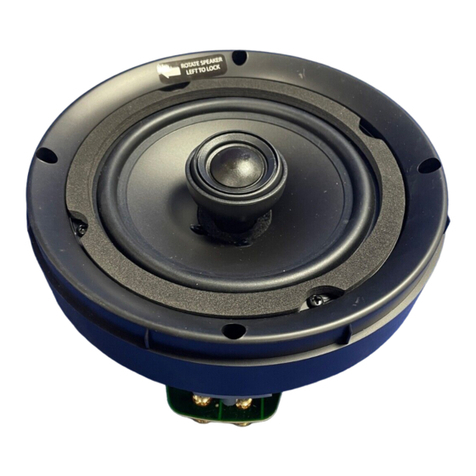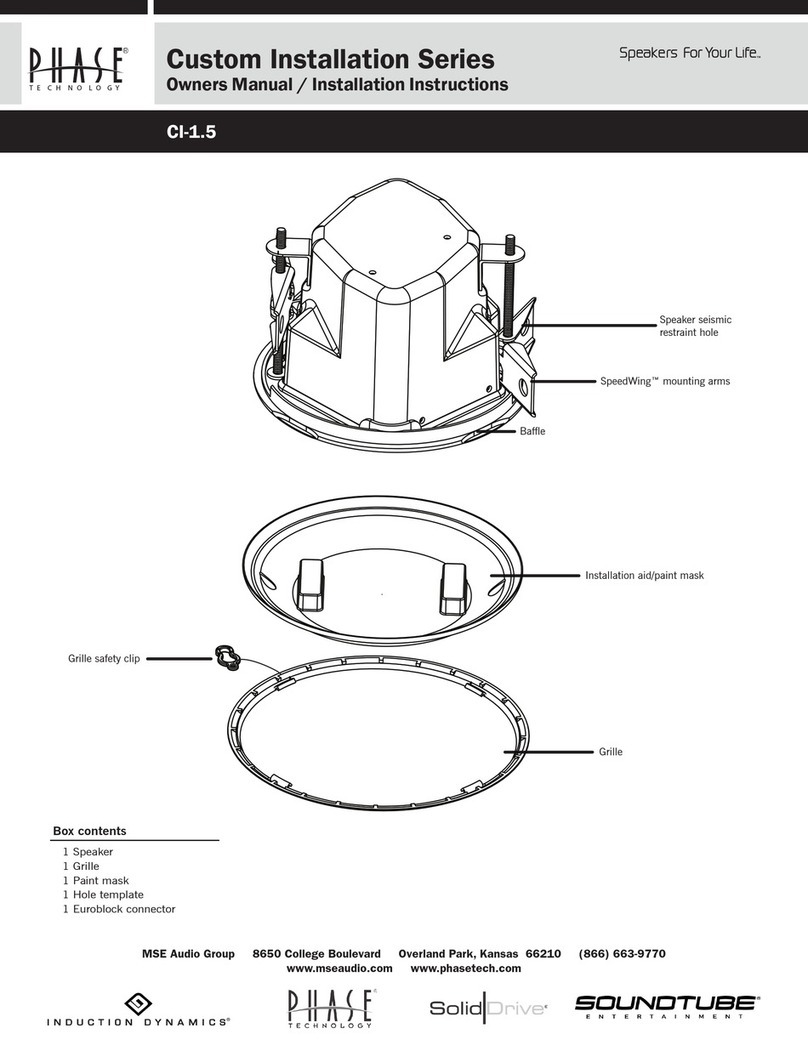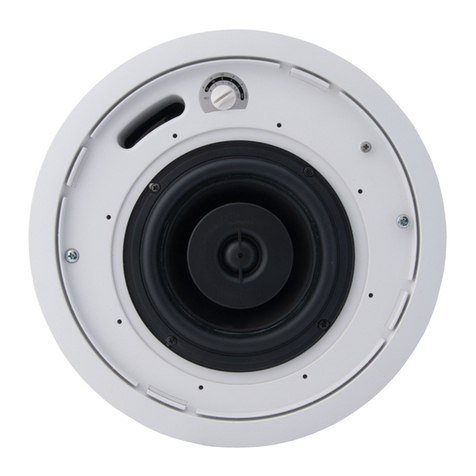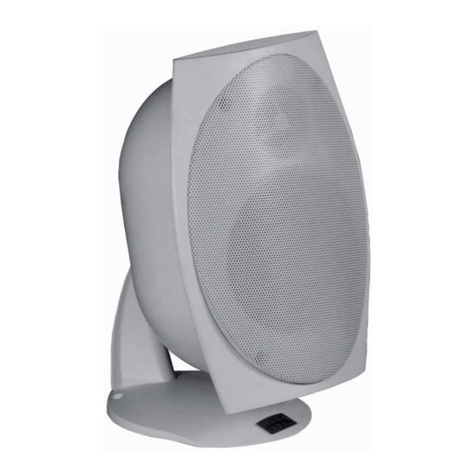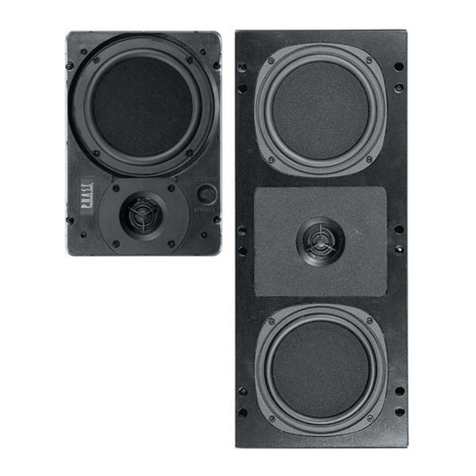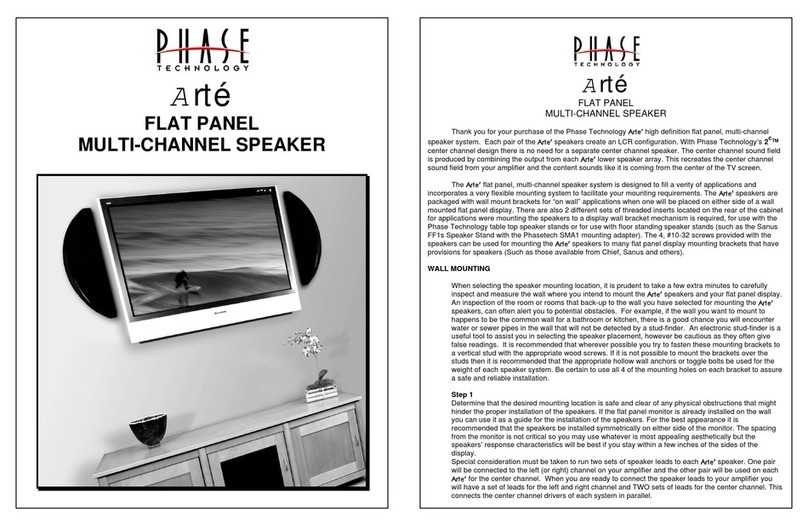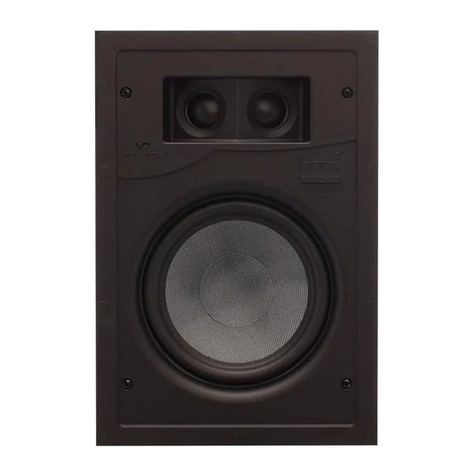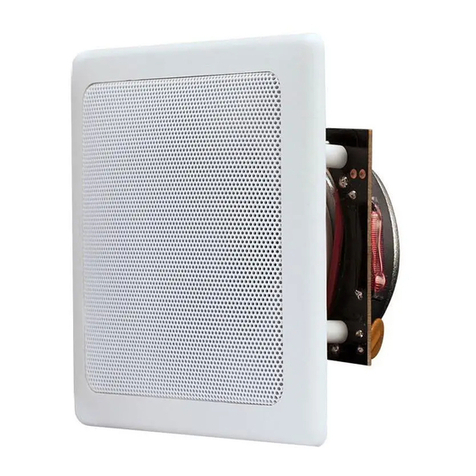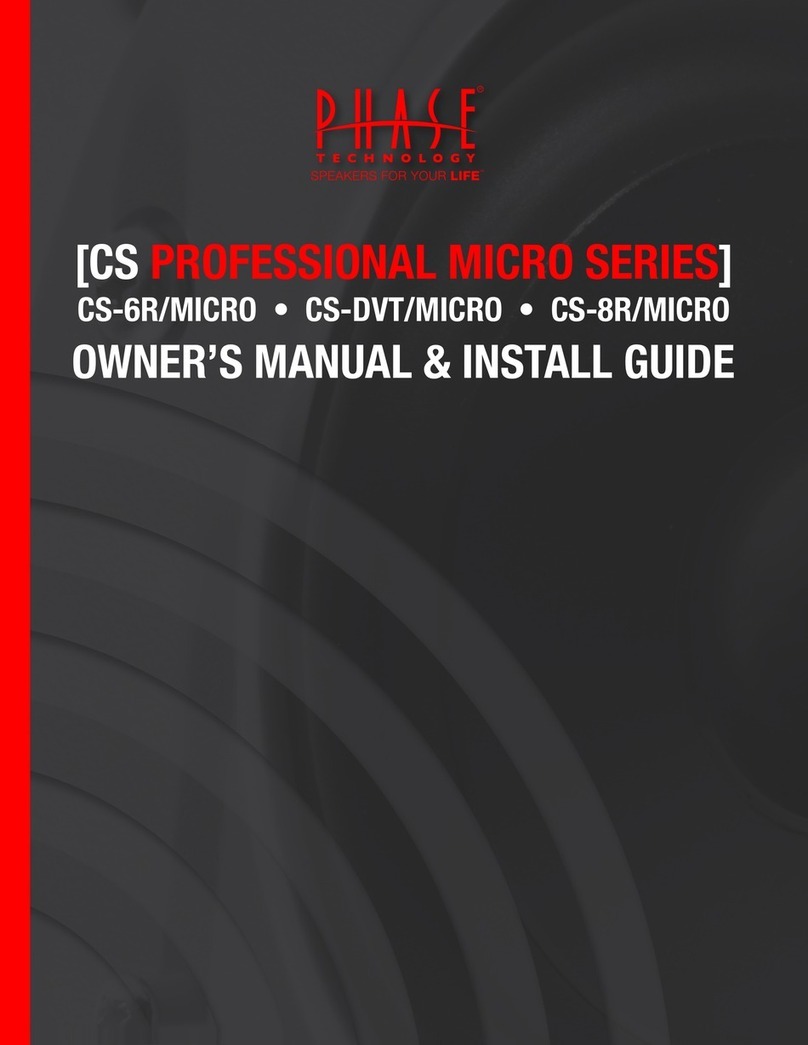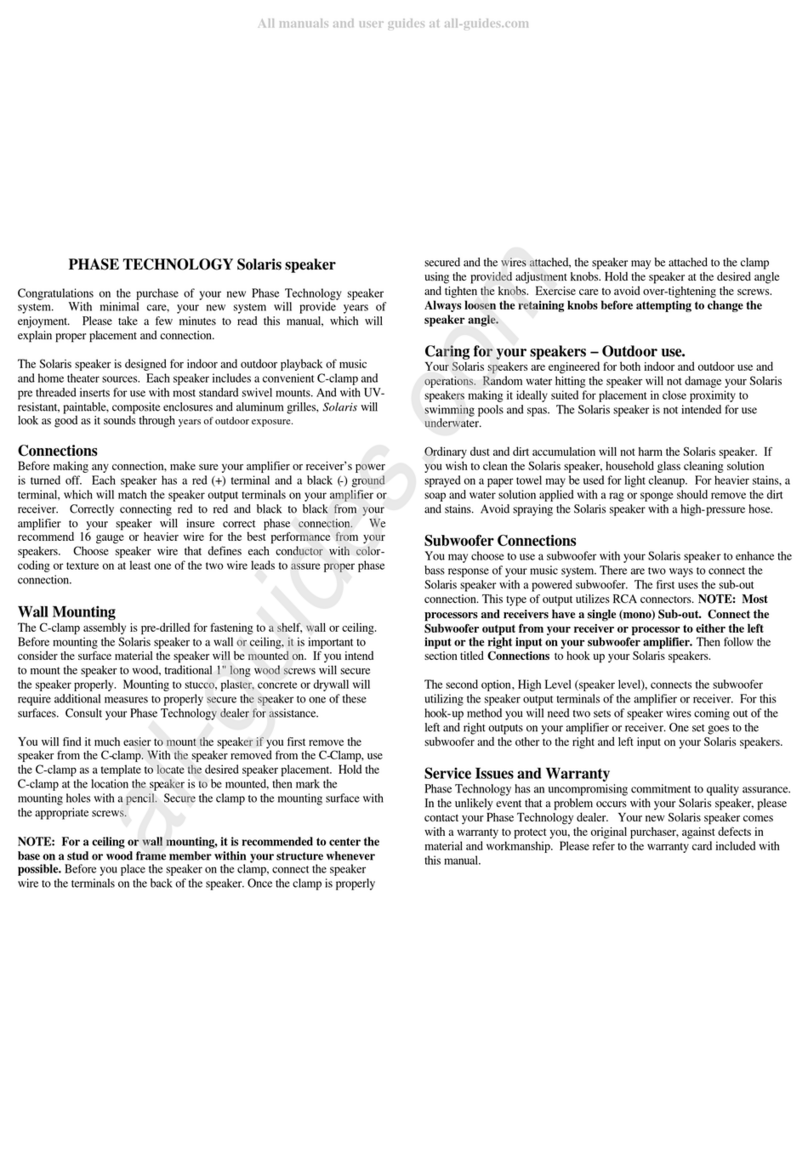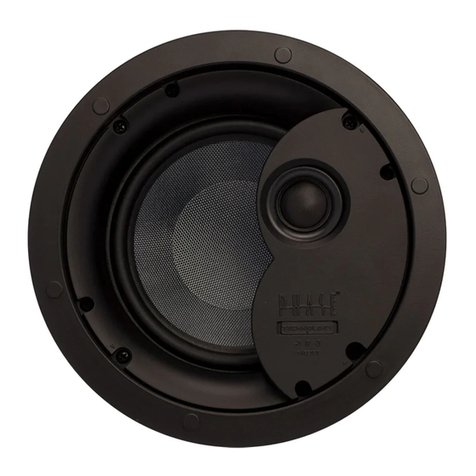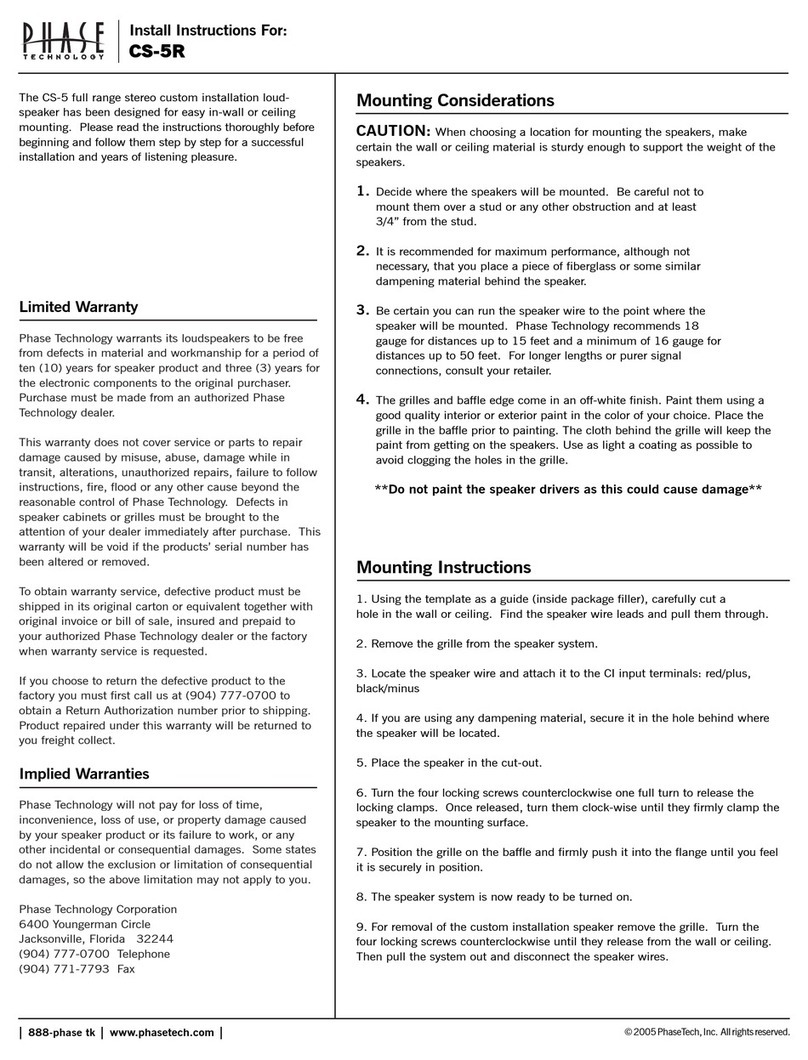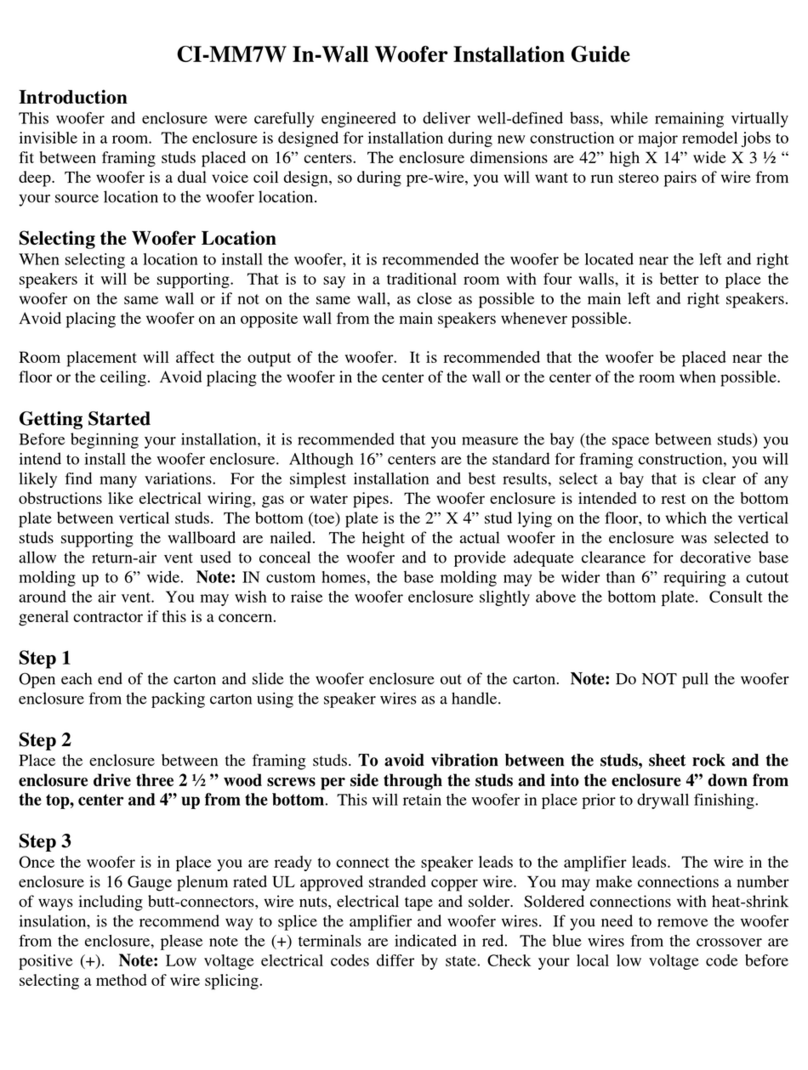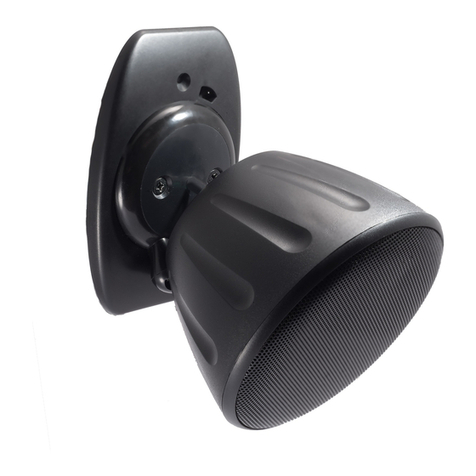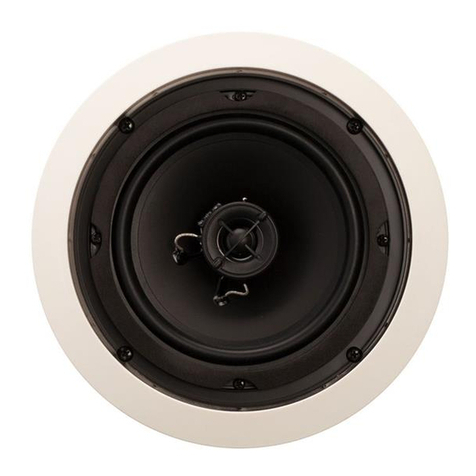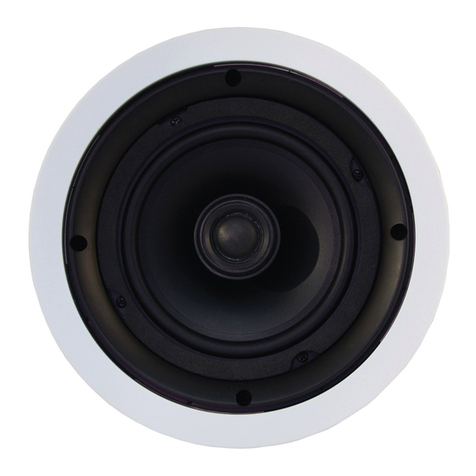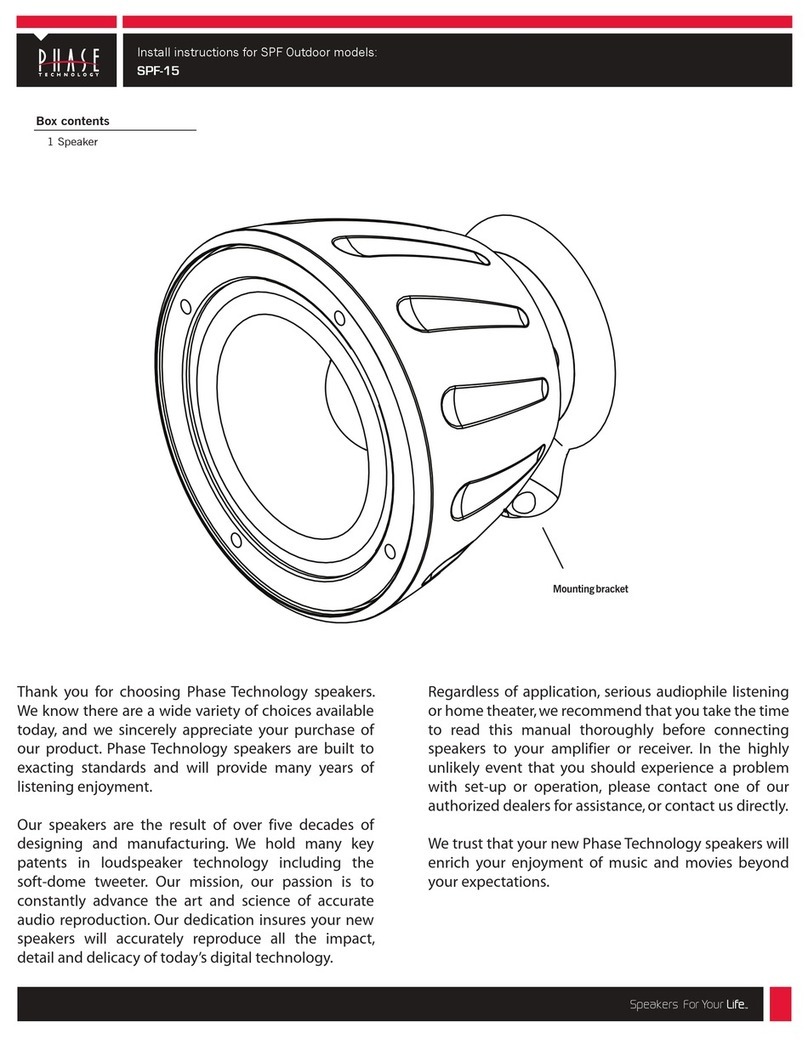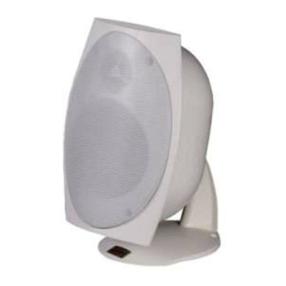EQUIPMENT Review
Widescreen Review • Issue 113 • October 2006
4
channels of amplification. This allows
for a tremendously dynamic system,
with a theoretical 250-watts-per-chan-
nel available. Now, some quick math
says that even at maximum specified
line voltage (126v) on a 30-amp circuit
and complete electrical efficiency, you
won’t get the full wattage output. This
is even true for the 16 channels that
are actually used. The point is simply
that you have all the power you will
need at your disposal with the DP2000
chassis.
Since I knew my first assignment for
my new theatre was going to be the
dARTS system, I pre-wired for this sys-
tem. In case anyone’s wondering, it
took about 850 feet to wire my new
space up with two sets to the L/R pairs
and three sets to the center channel.
My hat’s off to David Salz with
Wireworld Audio, who shipped out car-
tons of his new Horizon 52 Insta-Wire
in-wall loudspeaker cabling to use in
the build out. When the cables are not
used for multi-amped loudspeakers,
they will be shot-gunned into single
runs for my reference loudspeakers.
The remainder is going to be used to
wire up my office for surround, much to
my wife’s chagrin.
Next up was actually connecting the
system. I will take a moment here to tell
you that in normal instances this is
done by the installer; end users are not
expected to handle this task on their
own. I will say that this is a fairly com-
plex installation, and if you aren’t care-
ful, you won’t hook it up right. I didn’t
the first time and ended up having to
crack the manual. So much for my shot
at omnipotence.
Thankfully, the loudspeaker termi-
nals are actually numbered, and 1
starts at the front left woofer and 16
ends at the side left tweeter. The other
numbers are not randomly assigned;
the channels are grouped into stereo
pairs. Front L/R are paired, with inputs
1 and 2 correlating to outputs 1, 2 and
3, 4, respectively. The CC/Sub pair are
inputs 5 and 6 with outputs 5, 6, 7
going to the center channel loudspeak-
er and 8 going to each of the sub-
woofers that are installed in the sys-
tem. The side L/R pair is installed in
inputs 9 and 10, with outputs 9, 10 and
11, 12 going to L/R, respectively.
These are a traditional two-way loud-
speaker with two 6.5-inch woofers and
a single 1-inch silk dome tweeter. The
DCB 5.0C is the corresponding center
channel, with a pair of matching 6.5-
inch woofers and the same silk dome
tweeter. The woofers in the center
channel are given discrete amplifier
channels, and the loudspeaker is a
D’Appolito array for controlled disper-
sion in the vertical plane. For sur-
rounds, two pairs of DCB-SURR were
installed. These are switchable
between dipole and bipole mode but
were utilized only on dipole mode.
Original plans had matching DCB 1.0
LRs for rear surrounds for surround
music, but my columns came up 1/8 of
an inch too narrow to house the DCB
1.0 LRs. Phase Tech quickly replaced
the DCB 1.0 LRs with a pair of DCB-
SURRs and also with updated software
for the loudspeakers.
For those who think they read the
end of the previous sentence incorrect-
ly, you haven’t. The dARTS
processor/amplifier (model number
DP2000) actually has internal configu-
ration information about the customer’s
loudspeaker system. With the change
in loudspeakers, updates to the model
for rear surrounds, as well as their
response curve, had to be loaded into
the DP2000. This will occur anytime
you have to change loudspeakers so
that you can get your baseline
response back to the initial target.
I mentioned the DP2000 in passing
a moment ago. This chassis contains
the DSPs required for active
crossovers for each loudspeaker, as
well as applying the Audyssey
MultEQxt algorithm to the system in
your room. In addition, it has the
D2Audio modules for power amplifica-
tion of each output channel for your
system. At this time, dARTS is a closed
system, which is to say that it must be
used together as an integrated whole.
You’ll need a boatload of wire too—
this is an active multi-amplified system.
The DCB 1.0 LRs and DCB-SURRs
each require two channels of amplifi-
cation, with the tweeter and woofer
modules each receiving a D2Audio
amplification module. The DCB 5.0C
Center has dedicated amplification for
each woofer and the tweeter for three
Finally, the back pair uses inputs 13
and 14 with outputs 13, 14 and 15, 16
going to L/R in turn. As I said, it’s not
the easiest configuration, and I would
like it if they removed the excess
inputs to help alleviate confusion.
However, I also realize that there might
come a time when the same DP2000
chassis is used with other loudspeak-
ers that would require the extra inputs.
As I said, normally your dealer/custom
installer will be handling this for you.
Let them—and make sure they docu-
ment the connections!
Interfacing The
System And Room
One of the most important aspects
of the dARTS system is the custom
measurement taken for each room. The
system is intended to be used with a
calibrated microphone whose response
curve is already known by the meas-
urement software. In this way, even the
microphone’s sample-to-sample depar-
ture from linearity is accounted for.
At this point, just as with other
Audyssey systems, a series of meas-
urements is made. In my theatre, we
measured results at each of the six
seats, plus floor level in front of the
seats, and above the 2nd level of
seats. The low and high measurement
points are intended to even out any
room modes so that you aren’t trying to
adjust for those too aggressively in the
correction. The final goal for the soft-
ware was to create groupings of similar
responses across multiple seats and
create corrections for those groupings.
The algorithm itself is proprietary to
Audyssey and utilizes fuzzy logic.
Conventional computer logic is
Boolean, with on-and-off-type deci-
sions—an all-or-nothing affair, if you
will. Fuzzy logic is quite a bit different.
As an example, if you had a thermo-
stat, which responded to fuzzy logic,
you could say “make this room a little
warmer.”
Upon completion of these measure-
ments, a target response curve is
aimed for, and all of the calculations
are done on a PC. These calculations
are then downloaded into the DP2000
chassis. The results can be tweaked
by the dealer for the end user, if the
